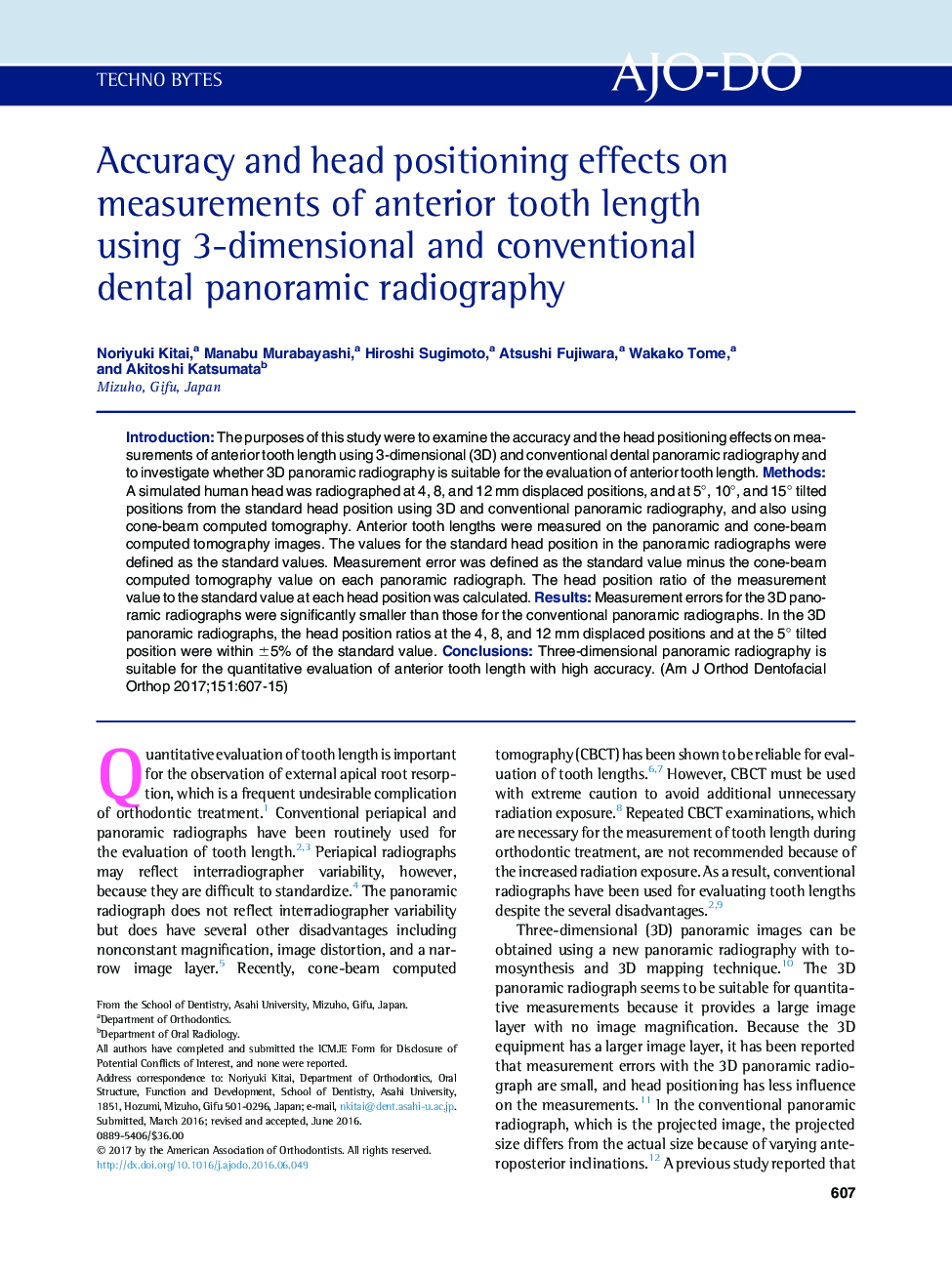| Article ID | Journal | Published Year | Pages | File Type |
|---|---|---|---|---|
| 5637729 | American Journal of Orthodontics and Dentofacial Orthopedics | 2017 | 9 Pages |
â¢Accuracy of anterior tooth length using 3D dental panoramic radiography is described.â¢Measurement errors were smaller with 3D panoramic than with conventional radiographs.â¢Three-dimensional panoramic radiography is suitable for quantitative evaluation of anterior tooth length.
IntroductionThe purposes of this study were to examine the accuracy and the head positioning effects on measurements of anterior tooth length using 3-dimensional (3D) and conventional dental panoramic radiography and to investigate whether 3D panoramic radiography is suitable for the evaluation of anterior tooth length.MethodsA simulated human head was radiographed at 4, 8, and 12 mm displaced positions, and at 5°, 10°, and 15° tilted positions from the standard head position using 3D and conventional panoramic radiography, and also using cone-beam computed tomography. Anterior tooth lengths were measured on the panoramic and cone-beam computed tomography images. The values for the standard head position in the panoramic radiographs were defined as the standard values. Measurement error was defined as the standard value minus the cone-beam computed tomography value on each panoramic radiograph. The head position ratio of the measurement value to the standard value at each head position was calculated.ResultsMeasurement errors for the 3D panoramic radiographs were significantly smaller than those for the conventional panoramic radiographs. In the 3D panoramic radiographs, the head position ratios at the 4, 8, and 12 mm displaced positions and at the 5° tilted position were within ±5% of the standard value.ConclusionsThree-dimensional panoramic radiography is suitable for the quantitative evaluation of anterior tooth length with high accuracy.
